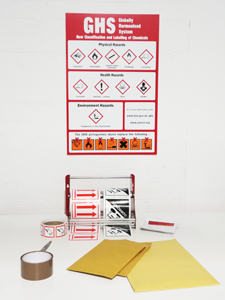
If you work with any dangerous chemicals, our range of Printable GHS Labels will allow you to indetify any hazards and minimise the possibility of an accident GHS stands for Globally Harmonised System, and this system is the international standard for chemical labelling. GHS was created by the United Nations to ensure that any dangerous chemicals that may pose a risk to an individuals health and safety would be labelled in the same way all over the world, and it now supercedes other EU classification standards.
Here at Label Source we have an excelllent selection of GHS Hazard Labels that will cover all possible bases, and with GHS regulation being legallybinding here in the UK. these labels will ensure that your workplace is both safe and legal. Our labels are available in a selection of sizes. Here is a handful of GHS-compliant Hazard labels we have to offer:
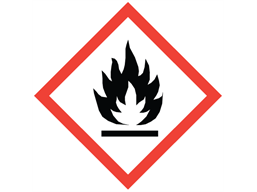
GHS Flamable Hazard Label
Used to mark any dangerous materials that are potentially flammable chemical substances or mixtures.
Waterproof
Chemical and abrasion resistant
Available in eight sizes
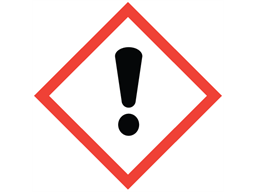
Harmful/Irritant Hazard Label
Used to mark any harmful or irritant chemical substances or mixtures.
Waterproof
Chemical and abrasion resistant
Available in eight sizes
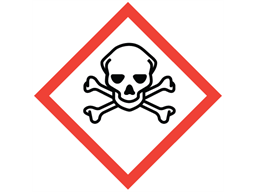
Toxic Hazard Label
Used to mark potentially toxic chemical substances or mixtures.
Waterproof
Chemical and Abrasion Resistant
Available in eight sizes
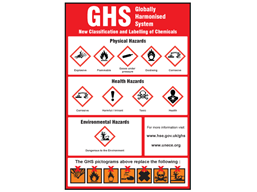
GHS Classification Sign
Used to outline the categories in physical, health and environmental hazards.
Available in two sizes
Made from rigid plastic
To view our entire range of Printable GHS Labels, click here.
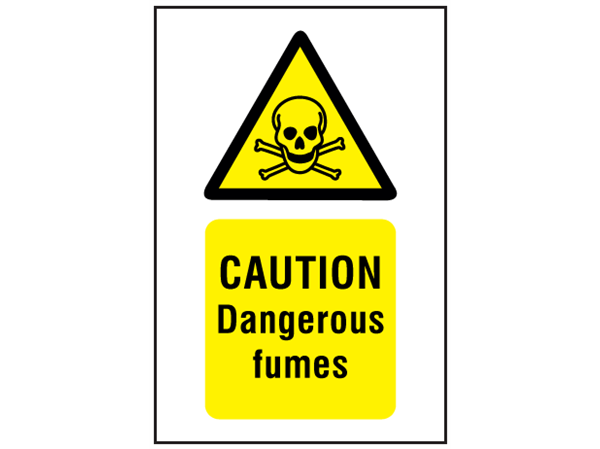
A local business in Neath, has been fined £20,000 after they failed to comply with a notice issues by the health and safety executive calling for the company to make improvements to the accident Repair Centre.
The company automobile body shop had been using a spray booth that had not been checked by a competent person to spray isocyanate paints. Isocyanate paints are the main cause of occupational asthma in the United Kingdom. Every year 50 workers who have been exposed to Isocyanate paint have to leave the industry.
If you are working with Isocyanate paint you should always wear air fed breathing apparatus, never spray the paint outside of the dedicated room or booth, and undergo regular health checks to identify any early symptoms of asthma. Manager’s need to ensure that the booth is running at negative pressure to ensure that air is drawn into the booth so the mist from the paint does not leak out into your garage or workshop.
If you are working with or around hazardous chemicals on a daily basis, it is important that you are wearing the correct Personal Protective Equipment (PPE) and ensure that you have the correct chemical safety signs in place to remind and encourage best practises whilst handling these hazardous chemical’s among your employees. Here, at Label Source we are proud to supply a range of specialist hazardous chemicals and substances safety signs. We make it one of our main priorities to stay up to date with the latest changes in the rules and regulations surrounding the handling of harmful chemicals and substances, this means that we can offer the latest chemical hazard warning signs, COSHH signs and tapes, Hazardous Good labels and Gas Cylinder safety Labels.
All of our hazardous chemicals and substances safety signs are produced to meet the BS 5378 standards and the safety signs and signals regulations 1996.
We are proud to be able to offer a truly comprehensive range of safety signs and tapes to our customers, however we realise that finding the right label can be a little overwhelming. If you are not entirely sure what safety sign your require then please contact us either by emailing Label source on info@labelsource.co.uk or you can telephone a member of our expert customer service team on 0800 3761 693
For sites with high levels of hazardous substances and dangerous chemicals, the new Control of Major Accident Hazards (COMAH) Regulations came into force on 1st June 2015. This is the introduction of the European Directive known as Seveso 111 in the UK. The main change involves the move from the CHIP (Chemicals – Hazard Information and Packaging to Supply) classification to the new CLP (Classification Labelling and Packaging) standards, which introduces the GHS (Globally Harmonised System).
The reclassification involves converting the substance inventories from the old to the new classification, as well as involving new additions such as pyrophoric solids and liquids, and flammable aerosols. These cover petrochemical, pharmaceutical, agrochemical, nuclear and explosives for on-shore sites.
In addition, all COMAH sites must make certain information about their sites and hazards in an electronic format for public access. This should include prevention policies, emergency plans, and methods of warning the public in the event of a major incident.
Label Source supplies a comprehensive range of GHS signs and GHS tapes, as well as hazard warning signs for chemicals and dangerous substances, which can assist in your risk assessment and training requirements. These signs can form an important component in the prevention of major accidents, and in limiting the effects if any such incident occurs.
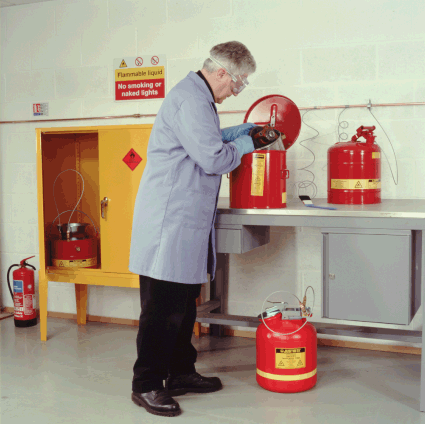
Laboratories can be hazardous places. If you work in a lab environment, you probably already know how important it is to display the correct chemical warning signs in high-risk areas; for everyone else, here are a few common examples:
- If corrosive materials are in use, a safety sign should be put in place to identify the hazard and remind workers of the need for hand protection.
- Some substances can emit dangerous fumes. Laboratories that use these materials should have the appropriate safety sign clearly displayed in an appropriate location.
- If there is a heightened risk of chemical spillage in your lab, you may wish to put up an information notice that tells people what to do in the event of a spill.
Other common laboratory hazards include oxidising agents, toxic/poisonous chemicals, hazardous waste, and irritants. It is recommended that site owners carry out a comprehensive risk assessment of the laboratory and all other work areas, then take the necessary action to make the premises as safe as possible. This could mean a complete overhaul of facilities and work processes, or it could be as simple as putting up a safety sign.
Label Source offer an extensive range of chemical warning signs for laboratories and other hazardous environments. If you cannot find the sign or label that you are looking for, feel free to email info@labelsource.co.uk and we will do our best to meet your requirements.
Chemical spills can have serious, and sometimes devastating, consequences including human health issues, environmental pollution, structural building damage or contamination, and threats to corporate image and reputation.
Emergency procedures should be in place to provide a safe response by trained teams of staff, contractors or emergency services, using appropriate personal protective equipment to tackle any leak or seepage of dangerous substances or hazardous chemicals.

Our range of chemical hazard warning signs can be used to identify the type of risk posed by such chemicals including toxicity, flammability, explosion or corrosion. Thus, the risks can be assessed from chemical contact with skin or eyes, causing irritation or burns, or from internal injuries caused by inhalation or ingestion. The personal protective equipment, such as gloves, goggles, clothing and respirators should be used before tackling any spill, and first aid should be available to treat any contaminated personnel.
Our spill kit signs can be used to provide contact details for spill supervisors, and the emergency services. These cover different types of chemicals; non-aggressive fluids and oil or fuel (on land); oil or fuel on land and water; and aggressive fluids such as acids and alkalis. They cover the types of containment and neutralising agents for dispersal and disposal. One key task is to prevent chemical release to the atmosphere, water course or to soil. Spill areas can be cordoned off using our barrier tapes to prevent other workers or the general public from entry.
In addition, our dangerous substance storage containment signs can itemise chemicals, waste and any special waste, to allow emergency staff to assess the immediate risks.